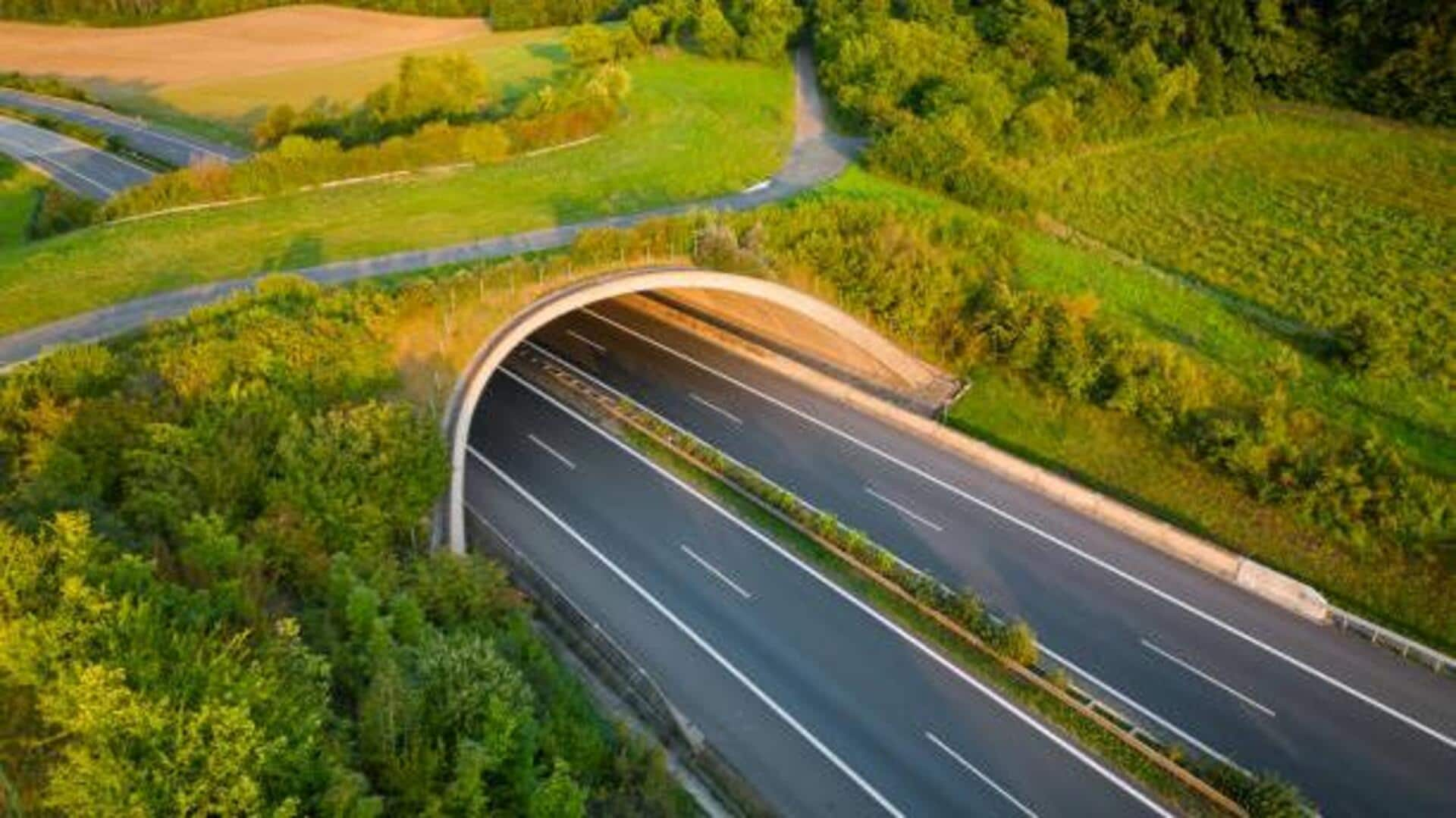
What are wildlife bridges and why do they matter?
What's the story
Wildlife bridges and tunnels are structures that help animals cross busy roads safely, reducing vehicle collisions. These crossings allow wildlife to move freely without the risk of accidents. More importantly, they help maintain biodiversity by connecting fragmented habitats, allowing animals to migrate, feed, and mate. This article delves into the world of these innovative structures and highlights some of the most impressive examples around the world.
Connectivity
The importance of connectivity
Fragmented habitats result in extreme genetic isolation among animal populations. Wildlife bridges and tunnels act as lifelines, knitting together the torn fabric of ecosystems. By offering safe passage over perilous roads, they protect the most vulnerable among us, from the tiniest insects to the mightiest mammals. Research indicates wildlife crossings decrease animal-vehicle collisions by up to 85%, proving their efficacy in conserving lives—both animal and human.
Design
Architectural marvels in conservation
Designs for wildlife crossings are tailored to the needs of different species. Bridges for large mammals like elk replicate natural landscapes, while tunnels designed for bats have textured walls that mimic tree bark, and those for amphibians have water channels to simulate wetland habitats. This highlights how architecture can help address environmental issues.
Examples
Global examples worth visiting
A prominent example is the Banff National Park in Canada, where over six underpasses and two overpasses were built exclusively for wildlife crossings. And, in the Netherlands, the Natuurbrug Zanderij Crailoo is the longest wildlife overpass in the world at 800 meters. It connects two large forests. Notably, these successful implementations have also turned into tourist attractions, further contributing to raising awareness about wildlife conservation.
Education
Engaging communities through education
Wildlife crossings further contribute to environmental education by providing visible demonstrations of humanity's commitment to harmonizing with nature. Many areas boasting such structures facilitate educational programs and tours detailing their significance, design process, and positive influence on local wildlife populations. This involvement nurtures a profound respect for biodiversity conservation within community members and visitors.
Exploration
Tips for responsible exploration
If you happen to visit wildlife bridges or tunnels, please follow local rules put in place to keep both visitors and animals safe. Watching wildlife from a distance helps these structures fulfill their purpose. Opting for guided tours can provide a deeper understanding of the engineering behind these projects and their importance in conservation.